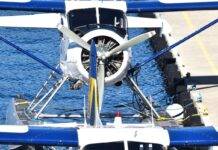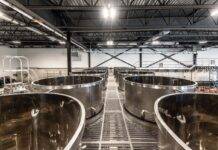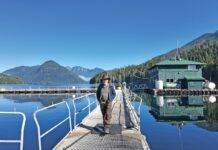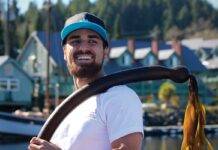When you live on an island, no matter how idyllic it is, there’s always a question in the back of your mind: How the heck am I going to get off this thing? It’s handy if you have a friend with a yacht or private plane, but for most of us, getting to the mainland means taking a public option, whether it’s a commercial flight or the BC Ferries.
But it has not always been that way. Here are some of the ways we’ve gotten ourselves across the Strait of Georgia over the years.
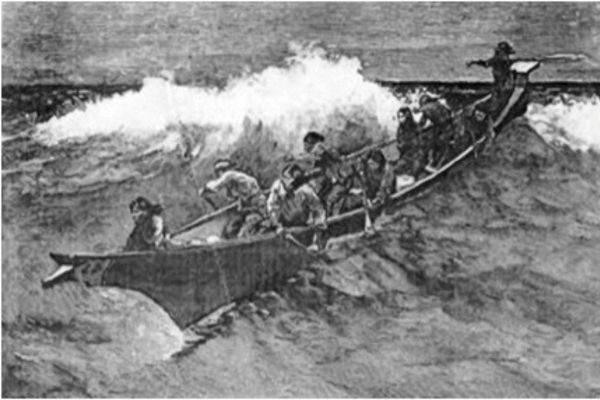
In the Beginning
The Coast Salish people fish, hunt, summer, trade, race and occasionally go to battle here in the Salish Sea, all via canoe. The large, heavy, 40-foot-long “Nootka” dugout canoes carved from massive cedar trees are perfectly designed for paddling long distances in rough open water, often carrying goods or warriors.
1778: Euro Zone
While searching for the Northwest Passage, Captain James Cook of the Royal Navy sails into Nootka Sound with his two vessels, Resolution and Discovery, and becomes the first European to set foot on what is now Vancouver Island. That is the beginning of a maritime fur trade between the Coast Salish people and the newcomers, with British, American, Russian and other ships soon plying these coastal waters.
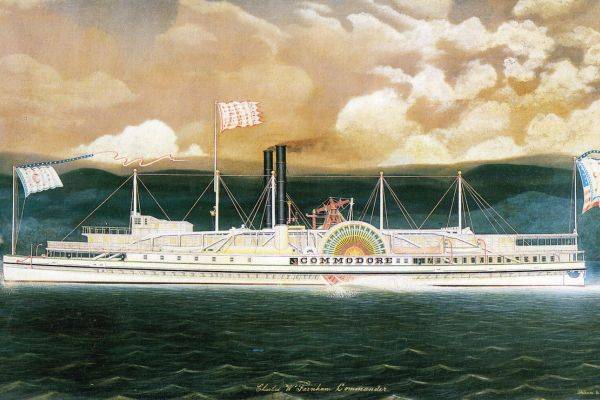
1858: Gold Rush
When gold is discovered in the Fraser Valley, miners and prospectors from all over the world flock to Victoria to gear up for their grand adventure. The first ship to stop here en route to the mainland is an American steamer called the Commodore; within a few weeks, some 20,000 miners hit town, transforming Victoria from a Hudson’s Bay fur-trading fort into a bustling business centre.
1898: Ferry Tales
Ninety years after the Black Ball line began offering the first-ever regularly scheduled passenger service across the Atlantic Ocean, it starts doing the same around Seattle (albeit under the name Puget Sound Navigation Company). By the 1930s, rebranded as Black Ball, it keeps up with the times by retrofitting older passenger ships to carry automobiles. In 1947, a vessel called Chinook sails the popular route between Seattle, Port Angeles and Victoria; considered the most modern vessel of its day, it can carry 100 cars and features a bridal suite and elegant dining room.
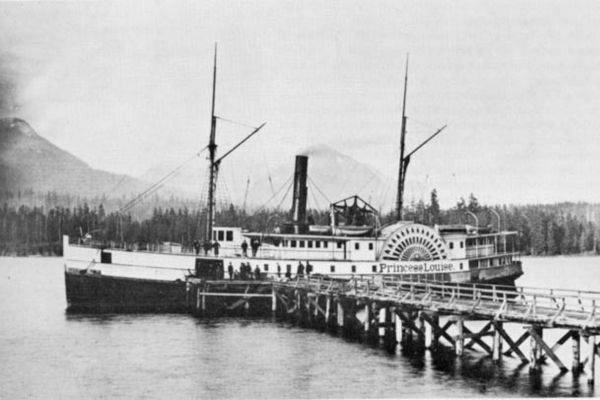
1901: Steaming Along
In the late 19th century, the Canadian Pacific Railway branches out from trains to steamships. In 1901, eager to connect Victoria with the railway terminus in Vancouver, the CPR Coastal Service launches its “Princess” fleet of modern “pocket liners,” small passenger ships with luxe, ocean-liner-like amenities. By the 1950s, CPR’s coastal service is struggling and a 1958 strike convinces then-premier W.A.C. Bennett to create BC Ferries. CPR ends its passenger services in 1974, its only legacy the Francis Rattenbury-designed Steamship Terminal Building on Belleville Street.
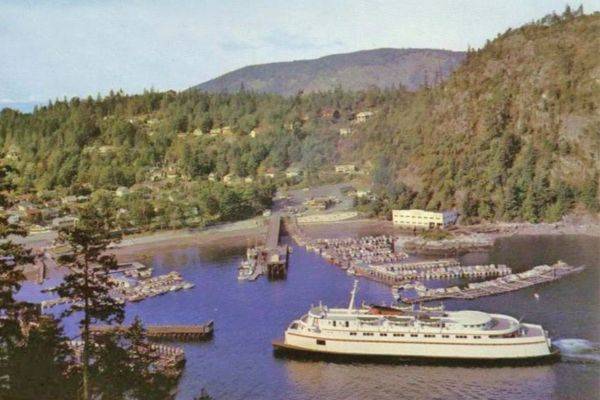
1960s: BC Ferries Ahoy
In 1960, BC Ferries’ first two vessels begin sailing from Swartz Bay to Tsawwassen. Today, BC Ferries is the largest passenger ferry line in North America, with some 41 vessels serving 47 locations on the B.C. coast, including, of course, that original route.
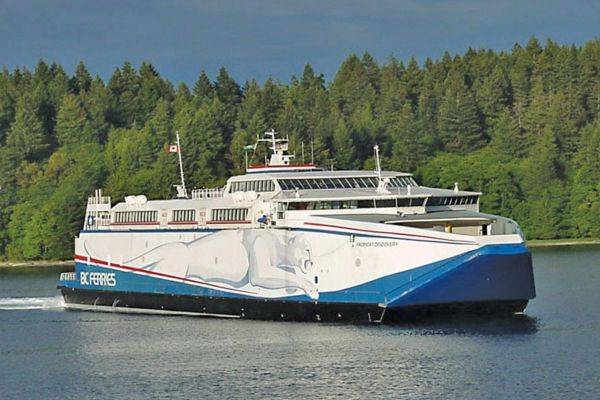
1990s: Not So Fast
Catamarans begin prowling these waters. For 19 months, the short-lived Royal Sealink Express joins downtown Victoria and Vancouver; its last sailing is in 1993. A couple of years later, the provincial government builds three PacifiCat catamarans. From 1999 to 2000, two of them trave between West Vancouver and Nanaimo; the third is completed, but never put into service. The project is cancelled in 2001 because of scandalous cost overruns, the vessels sold for a fraction of what they cost to build.
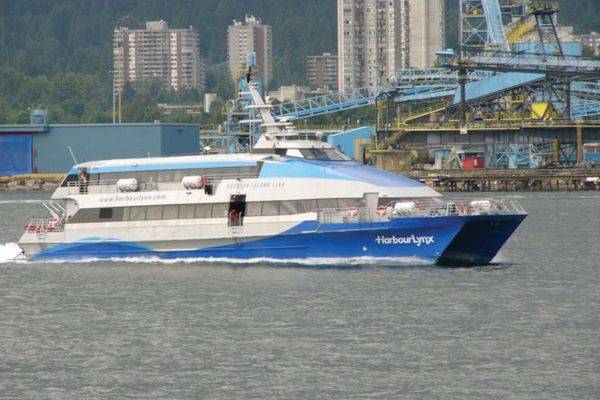
2006: Short Ride
After only three years in business, HarbourLynx, a high-speed passenger ferry between downtown Vancouver and Nanaimo, goes bankrupt after its only vessel undergoes a catastrophic engine failure.
2017: Very V2V
In May 2017, a luxe foot passenger service called V2V sets sail between downtown Vancouver and downtown Victoria. But mechanical problems, training delays and lower-than-expected ridership lead its Australian parent company to pull the plug in January 2020.
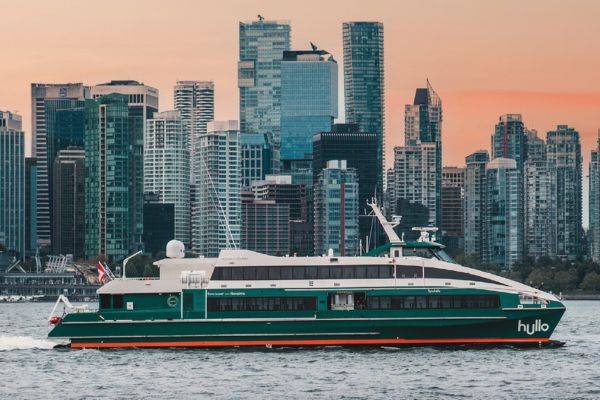
The Future: Hello to Hullo?
In 2023 Hullo Ferries begins carrying foot passengers between Nanaimo and downtown Vancouver. Designed to be a middle option between BC Ferries and premium services like HeliJet and Harbour Air, it is a roaring success. The owners are evaluating a possible Victoria route, though there are no plans as yet. We’ll keep hoping.


